Pillows take a bashing every night on several fronts. The weight of your head can flatten them. The moisture from your body can make them damp, and they can get stained from all sorts of oils, and fluids as we sleep.
Dirty pillows could be one of the reasons why your room smells bad when you wake up!
No wonder pillows need cleaning so often!
The recommendation is to wash them every three to six months to keep them sanitary and reduce allergens.
The problem is that machine washing them can make them lose their original fluffy feel. The inner material can clump together, and they won’t be as comfortable to sleep on.
The good news is that there are some steps that you can take to ensure that your pillow doesn’t change its shape after you wash it. Read on for some amazing tips!
Heads up: I sometimes use affiliate links. When you click these links and make a purchase, I may get a small commission. It won’t cost you anything but it helps me to run this site.
How to wash a pillow the right way
First off, can you wash it?
Most pillows are machine washable, including down-filled. But, you should always check the care label to make sure.
Here’s a handy guide:
| Pillow Type | Can It Be Machine Washed? |
|---|---|
| Feather | Yes |
| Polyester | Yes |
| Microfiber | Yes |
| Foam including memory foam | No |
| Buckwheat Hulls | No |
| Gel | No |
If your pillow cannot be washed, I recommend that you always use a pillow protector to keep it fresh and wash that regularly instead.
Which washing cycle to choose?
So if you have decided that it is safe to wash your pillow, which cycle is best?
- Select a gentle washing cycle with warm or cold water.
- Choose a washing detergent designed for delicates.
- Add an extra rinse cycle.
- Avoid fabric conditioner.
Never use fabric softener when you wash pillows. I recommend using a cup of vinegar in the rinse cycle instead.
Vinegar acts as a natural softener plus it will help to kill germs.
For added fragrance add a few drops of essential oils to the vinegar rinse.
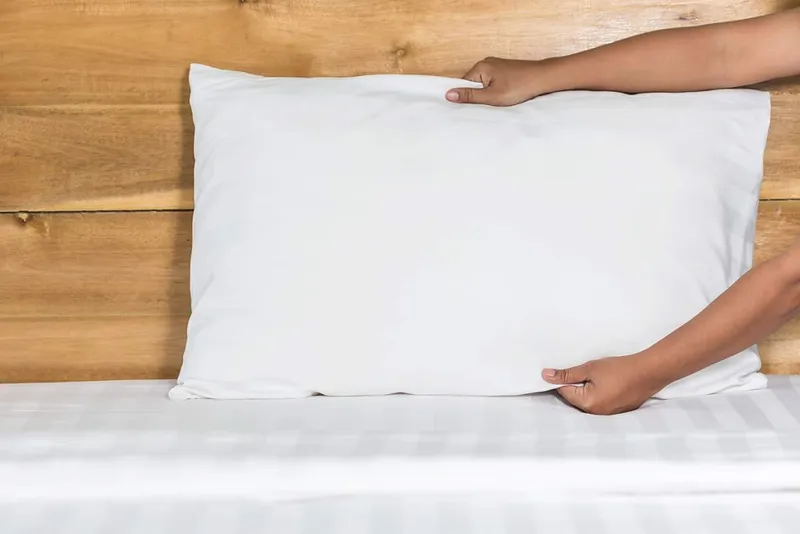
Washing tips to prevent your pillow from getting lumpy in the wash
Here are some tips to help prevent clumps when you wash your pillows.
- Sew some big stitches into the pillow. Take a large needle and sew big stitches in the pillow so that the filling stays in place as you wash it. You can remove it at the end.
- Always wash two pillows at once. Two pillows will help to balance the machine.
- Add towels. Add some extra towels or sheets between the pillows for extra cushioning.
- Front-loading machines are best. The pillow outers can get damaged by the agitator in a top-loading machine. If you have a choice go for a front-loader.
- The bigger the washing machine, the better. Take your pillows to a laundrette and use one of their big front-loading machines. The bigger drum will help to wash the pillows better and help to keep them fluffy.
Related reading:
- How to Wash Patio Cushions (no fuss method)
- How To Wash Cushions With No Zip!
- How To Wash Towels By Hand
- How To Clean a Mattress Without Baking Soda
- How Often Should You Wash Your Blankets?
How to dry pillows without causing clumping
Here are some tips to make sure your pillow dries perfectly without damaging it:
- Use a low drying temperature. High heat can damage the fibers inside the pillow and cause them to clump together. Always select a low or air-dry setting if your dryer has that mode.
- Dry naturally. If you can, dry your pillow naturally. It will take a long time (as long as 3 days) but can be worth doing if you have warm weather and enough time to spare.
- Dry thoroughly. Whether you dry in a dryer or naturally always make sure you thoroughly dry it.
- Add a tennis ball or something similar. When you tumble dry add wool dryer balls, tennis balls, or some Ecoegg Dryer Eggs. This has the effect of massaging your pillow as it dries.
Here are the steps to use when drying your pillow in the dryer:
Step 1 – Select the correct drying mode
Select the lowest heat setting or the air-dry setting.
Step 2 – Add tennis balls
Put one or two tennis balls into large socks and tie a knot in them. Or add two wool dryer balls or Ecoegg Dryer Eggs. This will help to fluff up the pillow as it dries.
Step 3 – Dry thoroughly
Allow your pillow to dry thoroughly. You may need to run a couple of drying cycles. If your pillow isn’t properly dry when you put it back on your bed you risk mold and mildew forming inside.
If your pillow is down-filled and still has clumps, it is a sign the pillow isn’t dry.
Step 4 – Finish with a bash
Give your pillow some pummeling and bashing to release any clumps.
Step 5
Air your pillow. Preferably outside in the sunshine, or in your airing cupboard if you have one.
How to fix a lumpy pillow when you don’t have a tumble dryer
If your pillow is lumpy, and you don’t have a dryer, first give the pillow a good bash to try to release the clumps.
If your pillow is still clumpy after you’ve bashed it your next option is to take out the stuffing so that you can redistribute it inside.
- Unpick a side seam.
- Remove the filling.
- Pull apart the clumps, so you have lots of smaller balls.
- Re-stuff the pillow.
- Sew up the seam.





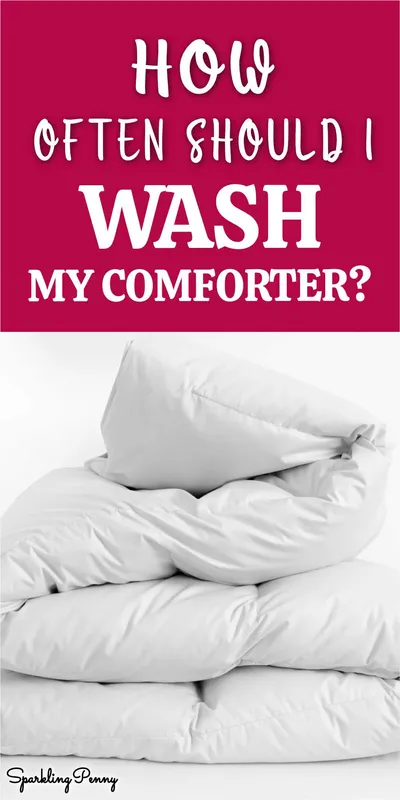
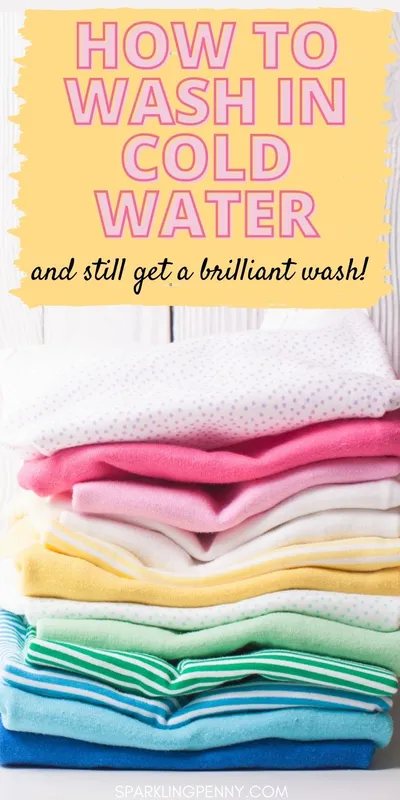

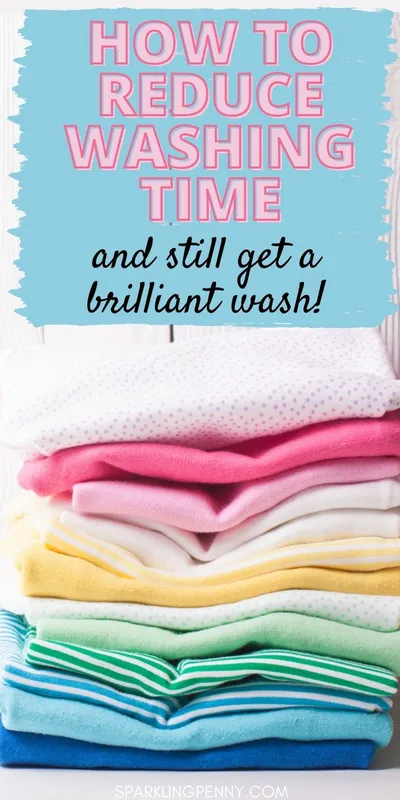
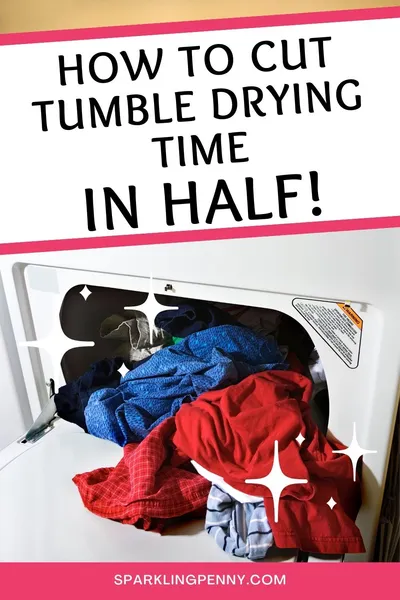


Share your thoughts
Your email address will not be published. Required fields are marked *